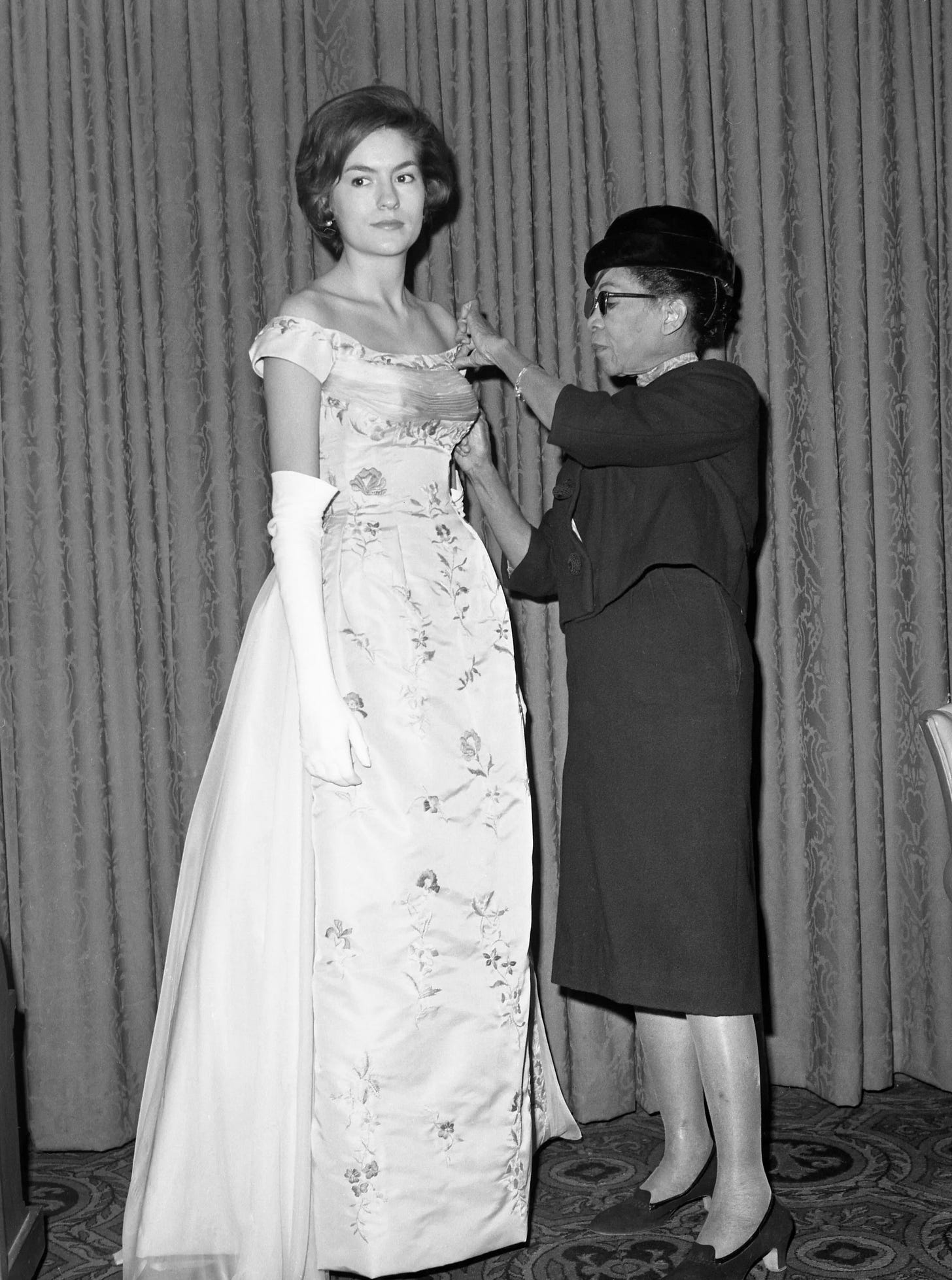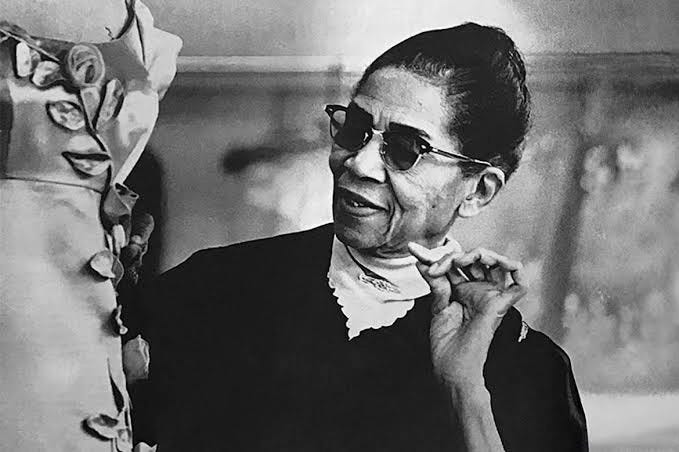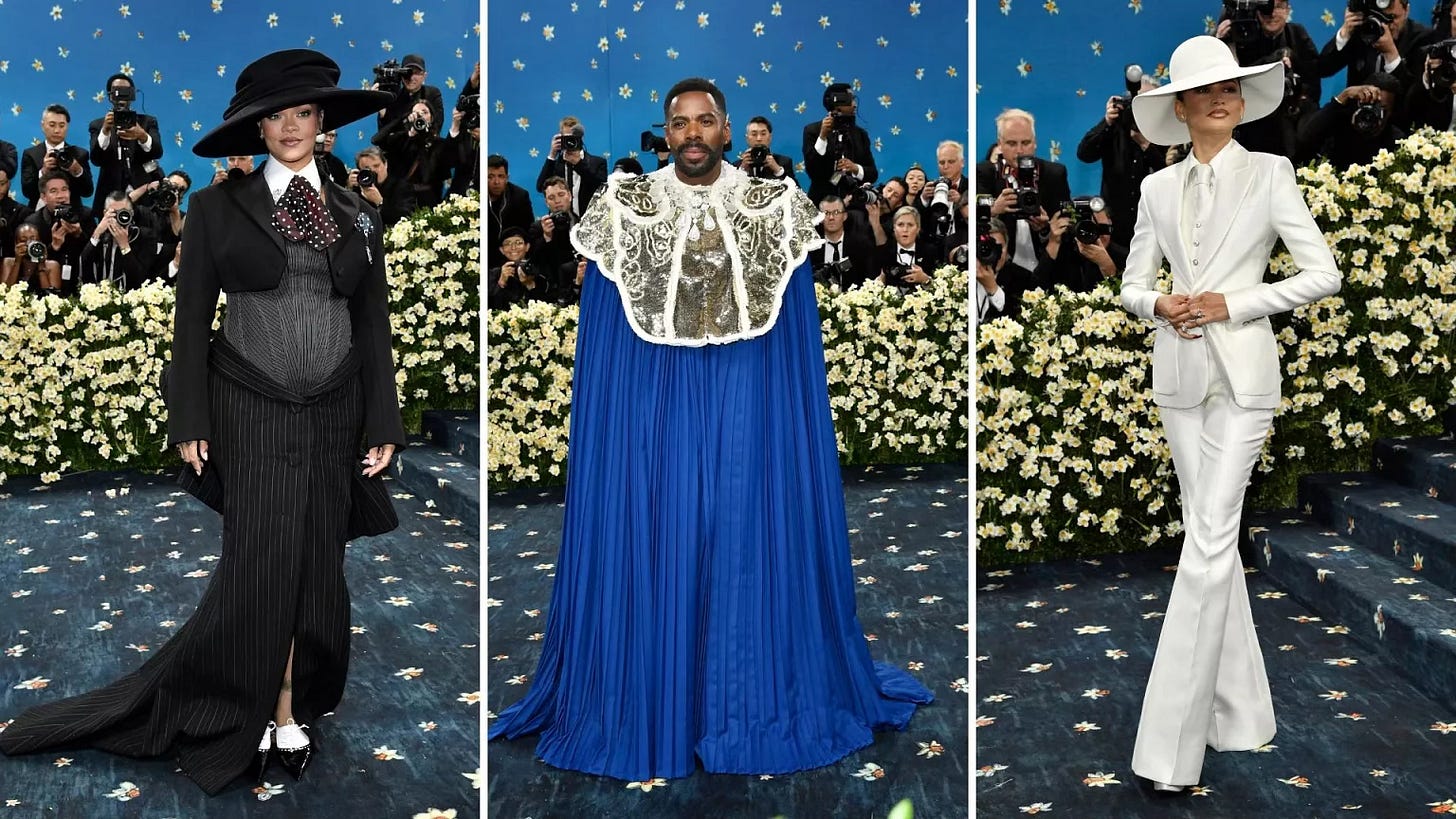Understanding Black Dandyism Through Ann Lowe
Ann Lowe and the Radical Power of Quiet Elegance.
As this year’s Met Gala brought Black dandyism to the forefront, the red carpet was more than just a display of extravagance, it became a conversation starter. While the gowns and suits dazzled, many are left wondering what Black dandyism actually is. Black dandyism is often defined by visual markers such as sharp tailoring, layered textures, bold color, and a dramatic sense of self-presentation. But at its core, it’s much more than the clothing. It’s a cultural and political practice of using style as a form of self-assertion.
Rooted in resistance to racist systems that devalued Black people, Black dandyism turns fashion into armor and elegance into power. It questions traditional ideas of masculinity and decorum by celebrating queerness and fluidity through the prioritization of presence over conformity. Black dandyism is about reclaiming beauty and visibility in spaces that have historically erased Black contributions, especially in luxury and high fashion. It’s where personal style meets personal history.


Though she may not be the first name that comes to mind when we talk about dandyism, Ann Lowe’s legacy quietly defines its essence. A pioneering Black designer whose work shaped American fashion often without recognition, Lowe exemplified the careful grace, pride, and resistance that lies at the heart of Black dandyism. Ann Lowe may not have dressed in flamboyant suits or silk capes, but her legacy embodies the radical power of dandyism.
Born in Alabama in 1898 to a lineage of dressmakers, Lowe was trained in sewing by her mother and grandmother. She went on to study design in New York, facing discrimination even as she outshone her classmates. By the 1950s, Lowe was designing custom gowns for America’s wealthiest families, including the Rockefellers, Roosevelts, and Kennedys. Her most famous creation is the ivory silk taffeta wedding gown worn by Jacqueline Bouvier Kennedy which remains as one of the most iconic dresses in American history. Yet, at the time, she wasn’t credited by name.
Lowe continued to create, nonetheless. Her work was filled with delicate handwork and floral appliqués, symbols of grace and excellence. She demanded the highest standards from herself, even when she was underpaid and unacknowledged. Her quiet rebellion wasn’t in protest signs but in pearls, pleats, and perfect stitches. Black dandyism is often associated with menswear and masculine performance, but Ann Lowe shows us that dandyism doesn’t belong to one gender. Her form of resistance was deeply feminine and highly technical. She used her craft to claim space in white-dominated couture, setting her own standards rather than following fashion's gatekeepers.

Lowe was known for her ability to manipulate fabric into soft, sculptural forms that required intense labor and skill. She often completed gowns by hand, building them from the inside out with intricate understructures and delicate embroidery. She refused to compromise on quality, even when working in conditions that gave her none of the credit she deserved. She used elegance to disrupt. Every gown was a declaration that Black hands built this beauty. Her clients wore her designs into halls of power, and even when she was hidden behind the seams, her vision was front and center. She didn’t need a stage to express her identity as her designs spoke volumes.

Through elegance, labor, and the mastery of technique, Ann Lowe expressed a form of Black dandyism that was deeply feminine and unmistakably powerful. Today, as the fashion industry takes another look at who’s to be celebrated, a growing wave of Black designers cites her as foundational. Her legacy isn’t just one of skill but also of survival and self-worth.

This year’s Met Gala theme reminded us that fashion doesn’t just follow history, it reveals it. Black dandyism, and the people who’ve lived it, are not side notes in fashion, they have helped shape the main story. Ann Lowe may have been soft-spoken, but her impact is loud. She has helped pave the way for Black creatives to enter luxury fashion with their full identities. And in doing so, she embodies the very heart of Black dandyism. Her designs carried the weight of beauty and defiance in equal measure. In honoring her, we remember that making a mark doesn’t always require noise, sometimes, it’s woven carefully into the fabric of history.








